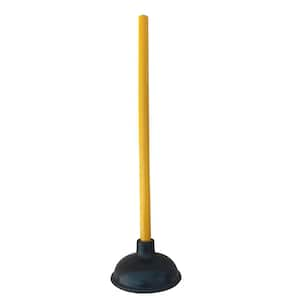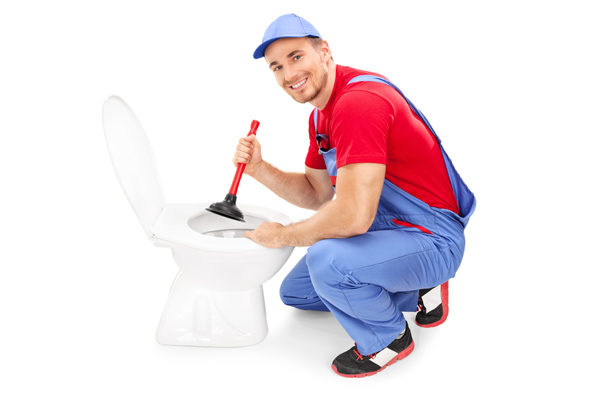Effective Plunger and Drain Cleaner: Crucial Strategies
Effective Plunger and Drain Cleaner: Crucial Strategies
Blog Article
The article author is making a number of great pointers on the subject of How to Use a Plunger to Unclog a Toilet or Drain as a whole in this great article below.

Introduction
Proper maintenance of house drains is vital for avoiding blockages and making sure smooth water flow. Among the key tools in every house owner's toolkit is the bettor, alongside different drainpipe cleansers made to tackle stubborn clogs successfully. This post discovers just how to utilize bettors and drainpipe cleaners successfully to keep your drains flowing freely.
Section 1: Understanding Bettors
Sorts of Plungers
There are a number of kinds of plungers available, each made for various kinds of drains pipes and clogs. One of the most typical types consist of cup bettors, flange bettors, and accordion bettors.
Just How Plungers Work
Bettors work on the principle of creating pressure and suction to remove blockages. When appropriately used over a drainpipe, they develop a vacuum cleaner that can take out particles or separate obstructions.
Selecting the Right Plunger
Choosing the best bettor relies on the type of drainpipe and the nature of the clog. Cup plungers are perfect for sinks and bathtubs, while flange bettors are better fit for toilets due to their design.
Common Errors with Bettors
Avoiding these mistakes makes sure reliable plunging: inappropriate seal around the drainpipe, not enough pressure, and unclear bordering particles.
Area 2: Utilizing Plungers Properly
Preparation
Prior to diving, make certain the bettor covers the drain completely and forms a limited seal. Clear any kind of visible debris around the drainpipe opening.
Method
Start with mild diving motions to build suction. Rise pressure gradually, making use of a stable rhythm. Repeat as necessary till the drain gets rid of.
Fixing Tips
If diving doesn't work, attempt changing the seal, applying petroleum jelly for a better seal, or making use of a various kind of plunger.
Area 3: Comprehending Drainpipe Cleaning Company
Sorts Of Drainpipe Cleaning Company
Drain pipes cleaners can be chemical or enzymatic. Chemical cleaners use solid chemicals to dissolve obstructions, while chemical cleansers make use of all-natural enzymes to break down raw material.
Exactly How Drain Cleaners Job
Chemical cleaners respond with blockages to liquify them, while enzymatic cleansers break down natural materials like hair and oil without harming pipes.
Safety and security Considerations
Always put on gloves and eye security when making use of chemical drainpipe cleaners. Make sure ample ventilation and comply with maker guidelines thoroughly.
Eco-Friendly Alternatives
Think about making use of vinegar and cooking soft drink or enzyme-based cleansers for eco-friendly options that are safer for pipes and the environment.
Section 4: Making Use Of Drainpipe Cleaning Company Properly
Application Strategies
Put chemical cleaners directly into the drainpipe opening. Allow them to help the suggested time prior to purging with hot water. Enzymatic cleaners must rest over night.
Precautions
Avoid mixing different kinds of cleaners, as this can create hazardous fumes. Never ever make use of chemical cleansers in conjunction with a plunger, as spilling can take place.
Handling Persistent Obstructions
For relentless clogs, consider utilizing a pipes serpent or calling a specialist plumbing professional to stop damages to pipelines.
Conclusion
Finally, understanding how to utilize plungers and drainpipe cleansers efficiently is vital for maintaining healthy and balanced plumbing systems. By choosing the right devices and techniques, homeowners can deal with minor blockages and avoid significant plumbing concerns down the line.
How To Properly Use A Plumbing Snake To Clear Drains
When any drain clogs in our home arise, we tend to gravitate toward the plunger and little else. In cases where the plunger and its vacuum-created pressure are not able to clear clogs, many immediately move to harmful chemicals or simply call their plumber to fix the issue.
we’re happy to help with all drain cleaning needs and concerns. This includes informing you on a few other home remedies you may have at your disposal for minor to moderate clogs, one of which is the use of a plumbing snake. Many people have never used one of these before – let’s go over the steps to take when your drain clogs and you have a plumbing snake available.
Attempt Plunger Use
The first step here, as we noted above, should indeed be to grab your plunger when you notice a drain clog and attempt to resolve it this way. If you’re unsure how to use a particular type of plunger, our plumbers can answer any questions you have. If this doesn’t do the trick, however, you move on to the snake.
Locate And Prepare Snake
A plumbing snake is a metal or plastic device that’s generally about a quarter of an inch thick. It’s design with significant extensions, meant to reach down into your clogged drain and push the clog out. Snakes also contain drain augers that will latch onto and push stubborn blockages.
If your plunger doesn’t clear a clog, locate your snake and bring it to the drain in question. We also recommend keeping a bucket nearby to collect the clog once you pull it out, plus we’d advise wearing goggles and possibly protective gloves.
Feed Snake
Once you’re ready to go, feed the snake slowly down the drain, using the crank device it comes with to keep it moving until it finds the clog. Once this happens, much of the clog will be latched onto the coil so you can pull it out, while the rest will simply break up and flow downward.
Detach Debris
Remove the snake slowly from the drain, and once you’ve done so, pick off any debris that’s stuck to the coil. This is another area where wearing gloves is a must.
Flush Drain
Finally, take a few minutes to ensure the snake has done its job correctly. If you’ve been using it on a toilet, flush the toilet a couple times and make sure everything flows well. If you’ve used it on a different drain, flush it with some room temperature water.
https://www.mybuddytheplumber.com/blog/how-to-properly-use-a-plumbing-snake-to-clear-drains/

Application Strategies
Put chemical cleaners directly into the drainpipe opening. Allow them to help the suggested time prior to purging with hot water. Enzymatic cleaners must rest over night.
Precautions
Avoid mixing different kinds of cleaners, as this can create hazardous fumes. Never ever make use of chemical cleansers in conjunction with a plunger, as spilling can take place.
Handling Persistent Obstructions
For relentless clogs, consider utilizing a pipes serpent or calling a specialist plumbing professional to stop damages to pipelines.
Conclusion
Finally, understanding how to utilize plungers and drainpipe cleansers efficiently is vital for maintaining healthy and balanced plumbing systems. By choosing the right devices and techniques, homeowners can deal with minor blockages and avoid significant plumbing concerns down the line.
How To Properly Use A Plumbing Snake To Clear Drains
When any drain clogs in our home arise, we tend to gravitate toward the plunger and little else. In cases where the plunger and its vacuum-created pressure are not able to clear clogs, many immediately move to harmful chemicals or simply call their plumber to fix the issue.
we’re happy to help with all drain cleaning needs and concerns. This includes informing you on a few other home remedies you may have at your disposal for minor to moderate clogs, one of which is the use of a plumbing snake. Many people have never used one of these before – let’s go over the steps to take when your drain clogs and you have a plumbing snake available.
Attempt Plunger Use
The first step here, as we noted above, should indeed be to grab your plunger when you notice a drain clog and attempt to resolve it this way. If you’re unsure how to use a particular type of plunger, our plumbers can answer any questions you have. If this doesn’t do the trick, however, you move on to the snake.
Locate And Prepare Snake
A plumbing snake is a metal or plastic device that’s generally about a quarter of an inch thick. It’s design with significant extensions, meant to reach down into your clogged drain and push the clog out. Snakes also contain drain augers that will latch onto and push stubborn blockages.
If your plunger doesn’t clear a clog, locate your snake and bring it to the drain in question. We also recommend keeping a bucket nearby to collect the clog once you pull it out, plus we’d advise wearing goggles and possibly protective gloves.
Feed Snake
Once you’re ready to go, feed the snake slowly down the drain, using the crank device it comes with to keep it moving until it finds the clog. Once this happens, much of the clog will be latched onto the coil so you can pull it out, while the rest will simply break up and flow downward.
Detach Debris
Remove the snake slowly from the drain, and once you’ve done so, pick off any debris that’s stuck to the coil. This is another area where wearing gloves is a must.
Flush Drain
Finally, take a few minutes to ensure the snake has done its job correctly. If you’ve been using it on a toilet, flush the toilet a couple times and make sure everything flows well. If you’ve used it on a different drain, flush it with some room temperature water.
https://www.mybuddytheplumber.com/blog/how-to-properly-use-a-plumbing-snake-to-clear-drains/

We hope you enjoyed reading our post about How to Use a Plunger to Unclog a Toilet or Drain. Thanks a lot for finding the time to browse our post. Make sure you take a moment to promote this blog post if you enjoyed reading it. Kudos for your time. Kindly visit our site back soon.
Schedule Your Job Now Report this page